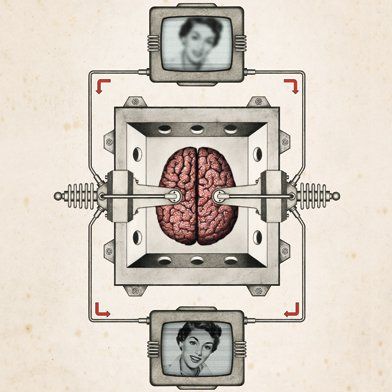Page 9947
Mar 2, 2018
Brain Implants Could Restore the Ability to Form Memories
Posted by Shailesh Prasad in category: neuroscience
A maverick neuroscientist believes he has deciphered the code by which the brain forms long-term memories.
Mar 2, 2018
Artificial intelligence quickly and accurately diagnoses eye diseases and pneumonia
Posted by Shailesh Prasad in categories: biotech/medical, health, robotics/AI
Using artificial intelligence and machine learning techniques, researchers at Shiley Eye Institute at UC San Diego Health and University of California San Diego School of Medicine, with colleagues in China, Germany and Texas, have developed a new computational tool to screen patients with common but blinding retinal diseases, potentially speeding diagnoses and treatment.
Mar 2, 2018
The Ongoing Battle Between Quantum and Classical Computers
Posted by Shailesh Prasad in categories: computing, information science, quantum physics
The quest for “quantum supremacy”—unambiguous proof that a quantum computer does something faster than an ordinary computer—has paradoxically led to a boom in quasi-quantum classical algorithms.
Mar 2, 2018
Scientists deliver high-resolution glimpse of enzyme structure
Posted by Shailesh Prasad in category: biotech/medical
Using a state-of-the-art type of electron microscopy, an MIT-led team has discovered the structure of an enzyme that is crucial for maintaining an adequate supply of DNA building blocks in human cells.
Courtesy of the researchers.
Mar 2, 2018
GPS Isn’t Very Secure. Here’s Why We Need A Backup
Posted by Genevieve Klien in categories: cybercrime/malcode, drones, military, mobile phones, satellites
That’s not a lot to you. If your watch is off by 13.7 microseconds, you’ll make it to your important meeting just fine. But it wasn’t so nice for the first-responders in Arizona, Pennsylvania, Connecticut, and Louisiana, whose GPS devices wouldn’t lock with satellites. Nor for the FAA ground transceivers that got fault reports. Nor the Spanish digital TV networks that had receiver issues. Nor the BBC digital radio listeners, whose British broadcast got disrupted. It caused about 12 hours of problems—none too huge, all annoying. But it was a solid case study for what can happen when GPS messes up.
The 24 satellites that keep GPS services running in the US aren’t especially secure; they’re vulnerable to screw-ups, or attacks of the cyber or corporeal kind. And as more countries get closer to having their own fully functional GPS networks, the threat to our own increases. Plus, GPS satellites don’t just enable location and navigation services: They also give ultra-accurate timing measurements to utility grid operators, stock exchanges, data centers, and cell networks. To mess them up is to mess those up. So private companies and the military are coming to terms with the consequences of a malfunction—and they’re working on backups.
The 2016 event was an accidental glitch with an easily identifiable cause—an oops. Harder to deal with are the gotchas. Jamming and spoofing, on a small scale, are both pretty cheap and easy. You can find YouTube videos of mischievous boys jamming drones, and when Pokemon GO users wanted to stay in their parents’ basements, they sent their own phones fake signals saying they were at the Paris mall. Which means countries, and organized hacking groups, definitely can mess with things on a larger scale. Someone can jam a GPS signal, blocking, say, a ship from receiving information from satellites. Or they can spoof a signal, sending a broadcast that looks like a legit hello from a GPS satellite but is actually a haha from the hacker next-door.
Continue reading “GPS Isn’t Very Secure. Here’s Why We Need A Backup” »
Mar 2, 2018
Bioquark Inc. — Cafe Esoterica Radio (Part 2) — Ira Pastor
Posted by Ira S. Pastor in categories: aging, astronomy, biotech/medical, business, cosmology, DNA, futurism, genetics, health, life extension
Some people will tell you that the Golden State Warriors are the future of basketball — a migration towards overlapping skill sets, a dozen similar 6-foot-8ish frames playing multiple positions, all switchy and, most importantly, twitchy from behind the 3-point line. This narrative hypothetical has been well-circulated — that we’re moving towards a version of basketball defined by a few unicorns and a surplus of redundantly versatile supporting players.
But what if the future of basketball doesn’t include players at all?
At the MIT Sloan Sports Analytics Conference at the end of February, researches Thomas Seidl and Aditya Cherukumudi presented a paper called Bhostgusters: Realtime Interactive Play Sketching With Synthesized NBA Defenses. The abbreviated summary is that they have developed an app which would allow an NBA coach to sketch a play on their tablet and then receive an animated estimation of how the defense would respond, taking into account the spatial tendencies of the specific defense as well as the players on the floor, defensive roles, the players’ foul trouble and potential fatigue based on minutes played, as well as the time and score. The program also returns an expected value for the offensive play the coach has drawn, given the projected defensive response.
Mar 2, 2018
How emerging technology will shape New York City’s future
Posted by Genevieve Klien in categories: bitcoin, drones, robotics/AI
NYC’s CTO Miguel Gamino explains why major technology innovations from drones to AI to blockchain will significantly impact how New Yorkers work, live, and play.


















